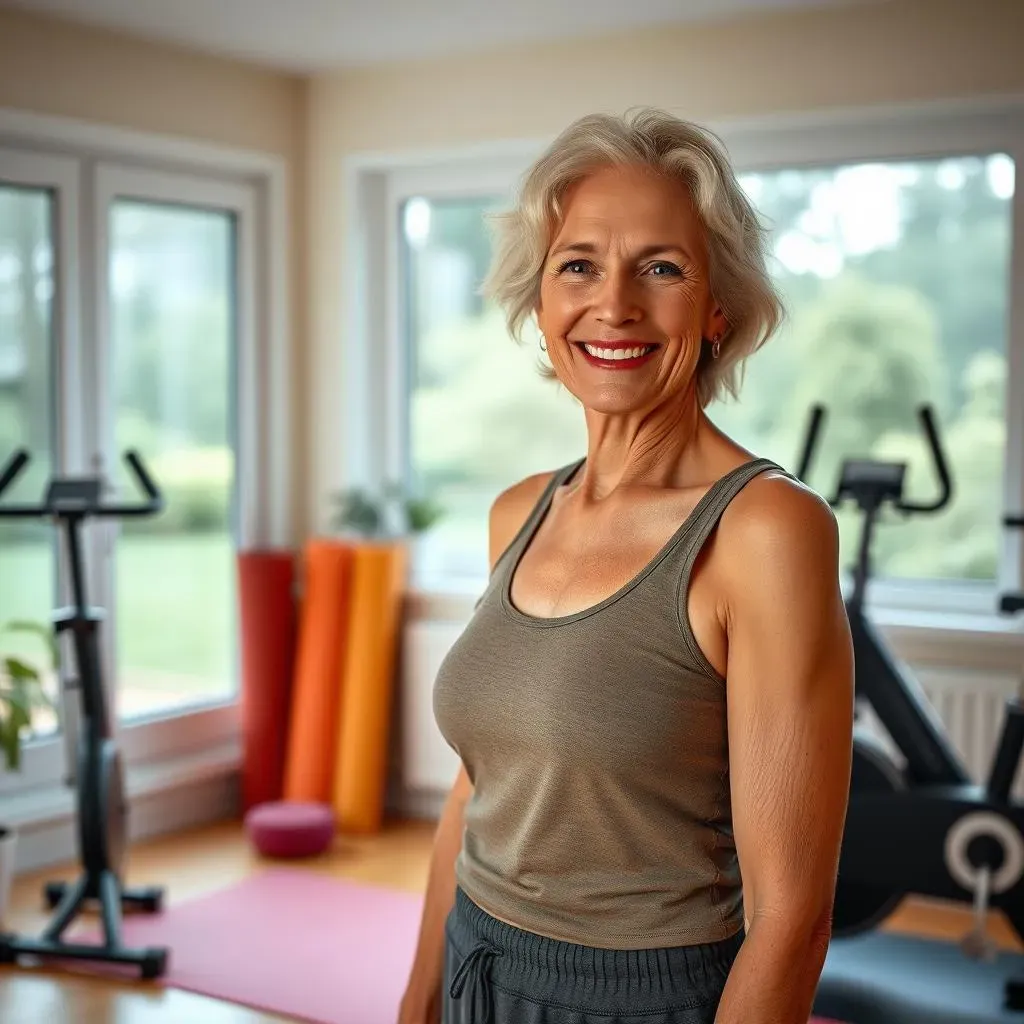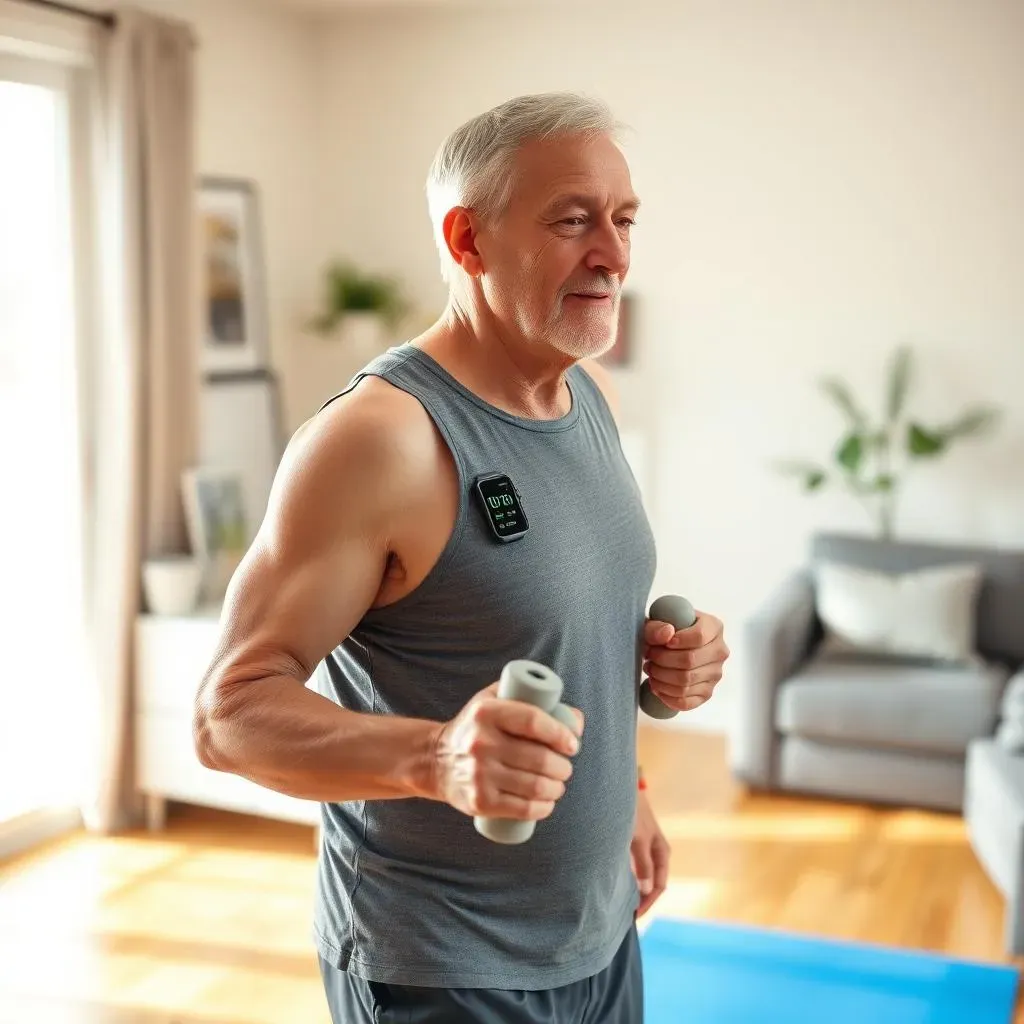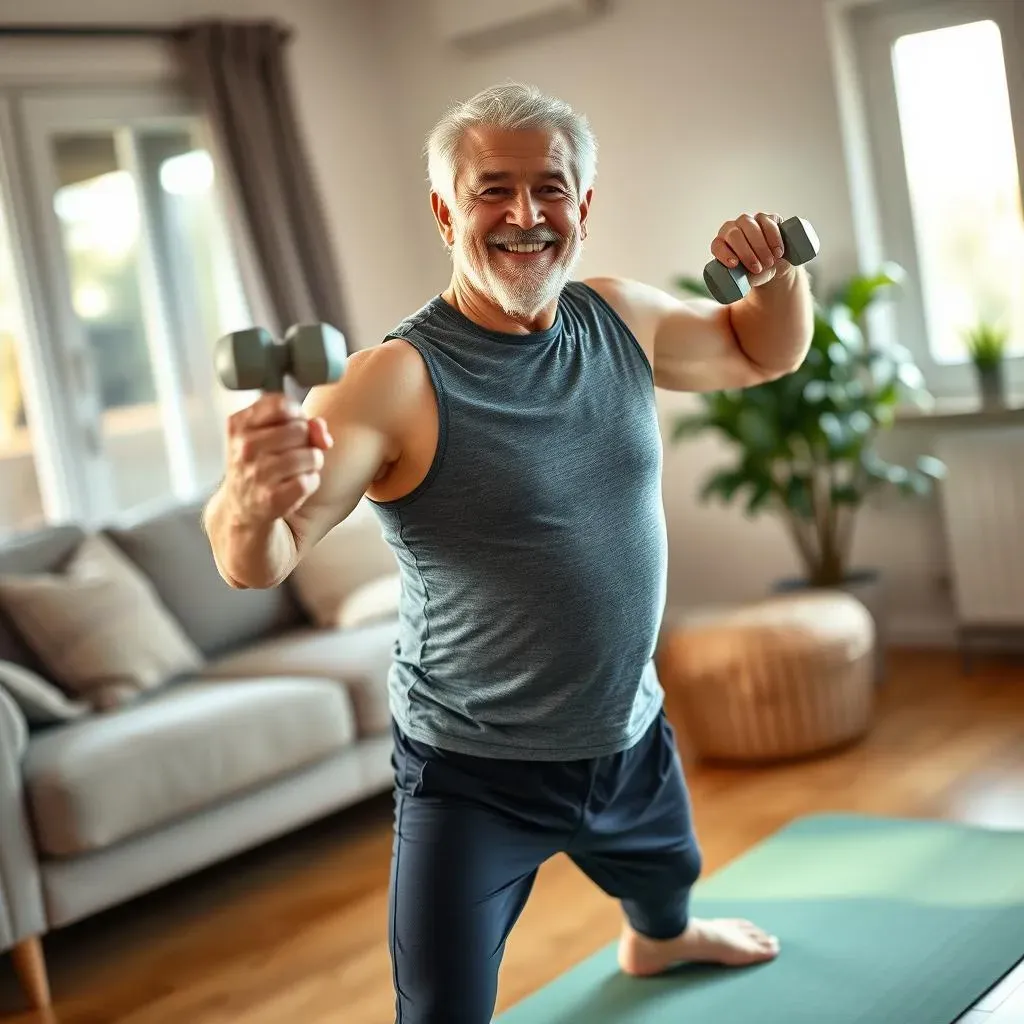Table of Contents
Staying active as we age is crucial, and finding enjoyable ways to maintain cardiovascular health is key. This article is your guide to effective and safe cardio workouts at home for over 50. We'll explore a range of exercises perfect for those 50 and beyond, focusing on routines that are both gentle on your joints and effective for boosting your heart health. Forget those grueling gym sessions; we'll show you how to create a sustainable and enjoyable home-based cardio program. We'll cover the best low-impact exercises, discuss important safety considerations, and help you build a routine that fits your lifestyle and fitness level. Whether you're a seasoned athlete looking for new challenges or just starting your fitness journey, this guide to cardio workouts at home for over 50 is designed to empower you to live a healthier, happier life. Let's get started on your path to a stronger, healthier heart!
Best Cardio Workouts at Home for Over 50

Best Cardio Workouts at Home for Over 50
Low-Impact Cardio for Beginners
Starting a cardio routine after 50 doesn't mean jumping into intense workouts. Think gentle, rhythmic movements that get your heart pumping without putting excessive stress on your joints. Walking is fantastic – aim for 30 minutes of brisk walking most days of the week. You can easily do this around your house, or even just around your neighborhood. Another great option is water aerobics, if you have access to a pool. The buoyancy of the water supports your body, reducing strain on your joints while providing a full-body workout. Even chair exercises can be surprisingly effective! Try seated marches, arm circles, and leg lifts. Remember, consistency is key. Start small and gradually increase the duration and intensity of your workouts.
Workout | Intensity | Benefits |
|---|---|---|
Brisk Walking | Low to Moderate | Improves cardiovascular health, strengthens legs, boosts mood |
Water Aerobics | Low to Moderate | Low-impact, full-body workout, improves flexibility and range of motion |
Chair Exercises | Low | Improves circulation, strengthens upper and lower body, increases flexibility |
Stepping Up Your Cardio Game
Once you've built a solid base with low-impact exercises, you can gradually introduce more challenging activities. Dancing is a fun way to increase your heart rate while improving coordination and balance. Put on your favorite music and let loose! Consider using a stationary bike or elliptical trainer. These machines provide a good cardiovascular workout with minimal joint stress. Remember to always listen to your body. If you feel any pain, stop the exercise and rest. Don't push yourself too hard, especially when starting. It's better to start slow and gradually increase the intensity and duration of your workout sessions to avoid injury and burnout.
- Dancing (various styles)
- Stationary Cycling
- Elliptical Training
- Swimming (if accessible)
Advanced Cardio Options for the Fit Over 50
For those already comfortable with moderate-intensity cardio, there are several ways to further challenge yourself. HIIT (High-Intensity Interval Training) involves short bursts of intense exercise followed by periods of rest or low-intensity activity. However, it's crucial to modify HIIT workouts to suit your fitness level and joint health. Focus on shorter intervals and longer recovery periods. You could try incorporating short bursts of jogging interspersed with walking. Jumping jacks or high knees, done in shorter sets, can also be included. Remember, even at an advanced level, proper form and gradual progression are key to preventing injuries. Don't forget to incorporate strength training into your routine to build muscle mass and improve overall fitness.
Staying Safe and Effective with Cardio Workouts at Home for the Over 50 Crowd

Staying Safe and Effective with Cardio Workouts at Home for the Over 50 Crowd
Listen to Your Body: The Importance of Moderation
Safety is paramount when starting any new exercise routine, especially after 50. Your body has changed over the years, and it's crucial to respect those changes. Don't try to do too much too soon. Start slowly and gradually increase the intensity and duration of your workouts. Pay close attention to how your body feels. If you experience any pain, stop immediately and rest. Ignoring pain can lead to injuries that could sideline you for weeks or even months. Remember, consistency is far more important than intensity, especially in the beginning. A short, consistent workout is better than an intense one that leads to injury.
- Start slowly and gradually increase intensity.
- Listen to your body and stop if you feel pain.
- Prioritize consistency over intensity.
- Stay hydrated throughout your workouts.
Warm-up and Cool-Down: Essential Steps for Injury Prevention
Never skip the warm-up and cool-down phases of your workout. A proper warm-up prepares your muscles and joints for activity, reducing the risk of injury. A good warm-up might include some light cardio, like marching in place, followed by dynamic stretches, such as arm circles and leg swings. Similarly, a cool-down helps your body gradually return to its resting state, preventing muscle soreness and stiffness. Include static stretches, holding each stretch for 20-30 seconds. These simple steps can significantly reduce your risk of injury and improve your overall workout experience.
Warm-up | Cool-down |
|---|---|
Light cardio (5 minutes) | Static stretches (5-10 minutes) |
Dynamic stretches (5 minutes) | Gentle walking (5 minutes) |
Seeking Professional Guidance
Before starting any new exercise program, especially if you have pre-existing health conditions, it's a good idea to consult your doctor or a qualified physical therapist. They can assess your fitness level, identify any potential risks, and help you create a safe and effective workout plan tailored to your specific needs. A physical therapist can also teach you proper exercise techniques to minimize the risk of injury. Remember, investing in your health is an investment in your future. Don't hesitate to seek professional guidance to ensure you're exercising safely and effectively.
Creating a Sustainable Cardio Workout Routine at Home for Over 50

Creating a Sustainable Cardio Workout Routine at Home for Over 50
Building Your Personalized Cardio Plan
Creating a sustainable cardio routine isn't about finding the *perfect* plan; it's about finding the *right* plan for *you*. Start by identifying activities you genuinely enjoy. Do you love dancing? Is walking your happy place? Do you have a stationary bike gathering dust? Choose activities that excite you, not ones you dread. This is crucial for long-term adherence. Next, set realistic goals. Don't aim for an hour-long workout every day if you're just starting. Begin with shorter sessions (15-20 minutes) and gradually increase the duration and intensity as your fitness improves. Remember, consistency trumps intensity. Three 20-minute sessions are far better than one intense, injury-prone 60-minute session.
Step | Action |
|---|---|
1 | Choose enjoyable activities |
2 | Set realistic, achievable goals |
3 | Schedule workouts into your week |
4 | Track your progress and celebrate milestones |
Scheduling and Tracking Your Progress
Once you've chosen your activities and set your goals, schedule your workouts into your week like any other important appointment. Treat your fitness time as non-negotiable. Consider using a calendar or planner to block out time for your workouts. This helps you stay organized and committed. Tracking your progress is just as important. Keep a journal or use a fitness app to record your workouts, noting the duration, intensity, and how you felt. This allows you to monitor your progress, identify areas for improvement, and celebrate your achievements. Seeing your progress visually can be incredibly motivating and help you stay on track. Don't be afraid to adjust your plan as needed; flexibility is key to long-term success.
- Use a calendar or planner to schedule workouts
- Track your progress using a journal or fitness app
- Celebrate milestones and adjust your plan as needed
- Don't be afraid to ask for support from friends or family
Staying Motivated and Making it a Habit
The most challenging part of any fitness journey is staying motivated. Find a workout buddy to keep you accountable and make it fun. Consider joining an online fitness community or finding a local group with shared fitness goals. Reward yourself for reaching milestones, but make sure the rewards support your healthy lifestyle, not hinder it. Remember, building a sustainable routine takes time and effort. There will be days when you don't feel like working out. That's okay. Just get back on track the next day. Consistency is key; don't let a missed workout derail your entire plan.
